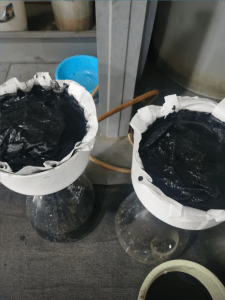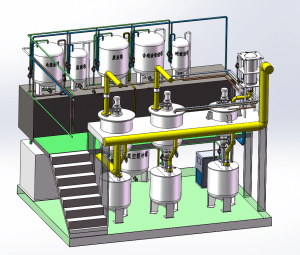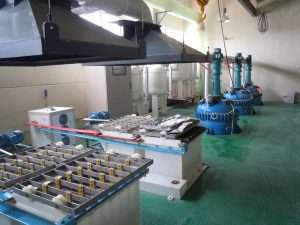Call us now:
The purification of silver by electrolysis involves using an electrolytic cell to remove impurities from silver metal. The process is based on the principle of electroplating, where a direct current is passed through a silver electrode and a sacrificial electrode, typically made of pure silver.
Here is a step-by-step procedure for the purification of silver by electrolysis:
Set up an electrolytic cell: Create an electrolytic cell by filling a container with a silver electrolyte solution. The electrolyte is typically a solution of silver nitrate (AgNO3) or silver sulfate (Ag2SO4). Place two electrodes in the solution, one being the impure silver electrode (anode) and the other the pure silver electrode (cathode).
Connect the electrodes: Connect the anode (impure silver electrode) to the positive terminal of a power supply or battery and connect the cathode (pure silver electrode) to the negative terminal. Ensure that the electrodes do not touch each other.
Electrolysis process: When the electric current passes through the electrolyte, the silver atoms from the anode will dissolve into the solution as silver ions (Ag+). These silver ions will then be attracted to the cathode, where they will gain electrons and deposit onto the pure silver electrode, effectively purifying it. At the same time, impurities present in the anode will remain in the electrolyte or settle at the bottom of the container.
Monitoring the process: Monitor the electrolysis process by observing changes in the appearance of the electrodes and the solution. Over time, you should notice the impure silver electrode becoming thinner as silver dissolves, while the pure silver electrode grows thicker as silver ions deposit onto it. The electrolyte may also change in color as impurities are removed.
End of the process: Continue the electrolysis process until you are satisfied with the level of purification. The duration of electrolysis will depend on the initial purity of the silver and the desired level of purification. Once complete, carefully remove the purified silver electrode (cathode) from the solution.
Rinse and dry the silver: Rinse the purified silver electrode with distilled water to remove any remaining electrolyte solution. Then, carefully dry the silver electrode to obtain purified silver metal.
It's important to note that this process is a general guideline, and the specific details may vary depending on the apparatus and chemicals used. Safety precautions should be followed when working with chemicals and electricity, including wearing appropriate protective equipment and working in a well-ventilated area.
Certainly! Here are a few additional points to consider when purifying silver by electrolysis:
Filtration and separation: After the electrolysis process is complete, you may need to filter the electrolyte solution to remove any solid impurities that may have settled at the bottom of the container. This can be done using a filter paper or a filtration system. This step helps separate the purified silver ions from the remaining impurities in the electrolyte.
Recovery of silver: Once the electrolyte solution has been filtered, you can recover the purified silver from the solution. One common method is to perform a reaction that converts the silver ions back into solid silver. For example, you can add a reducing agent like copper metal (Cu) to the electrolyte solution. The copper will react with the silver ions, causing the silver to precipitate out as solid silver (Ag) while the copper ions (Cu2+) go into the solution. The solid silver can then be collected, washed, and dried.
Refining: If a high level of purity is desired, further refining processes may be necessary. One common method is the use of chemical processes such as the Parkes process or the Miller process, which involve the treatment of the purified silver with additional chemicals to remove remaining impurities.
Safety precautions: It's essential to take appropriate safety precautions during the purification process. Wear protective gloves, goggles, and a lab coat to prevent direct contact with the chemicals. Work in a well-ventilated area or under a fume hood to avoid inhaling any fumes or gases that may be produced during the process. Follow proper waste disposal guidelines for the electrolyte solution and any chemicals used.


